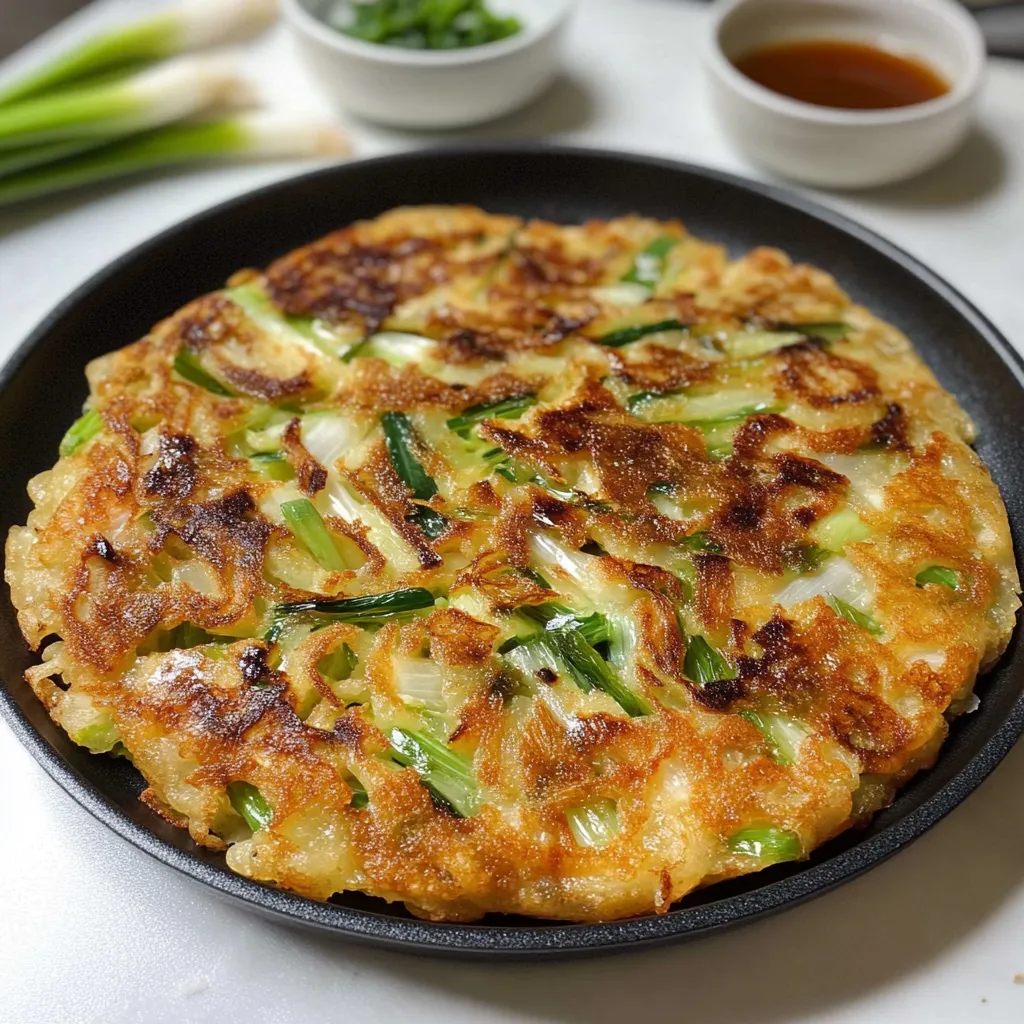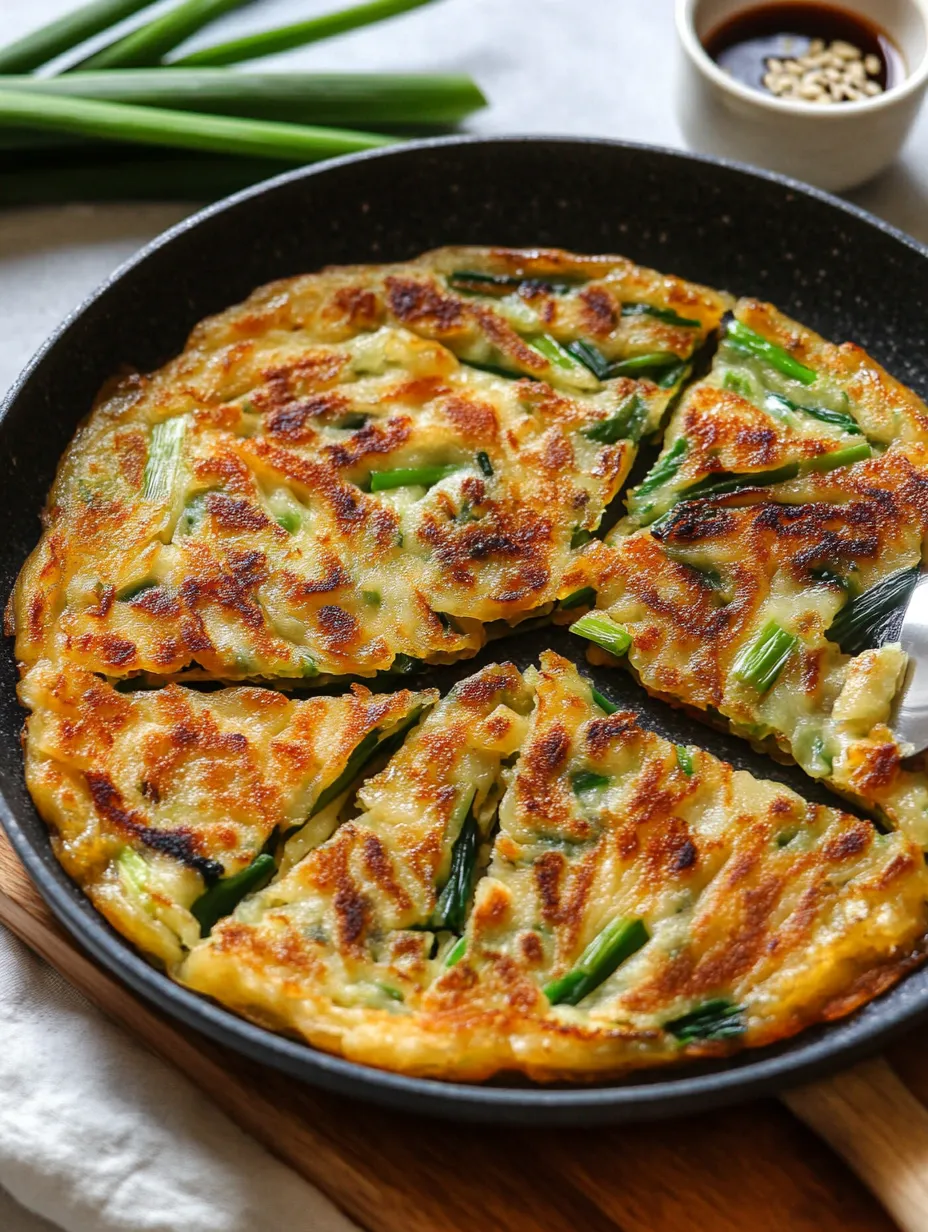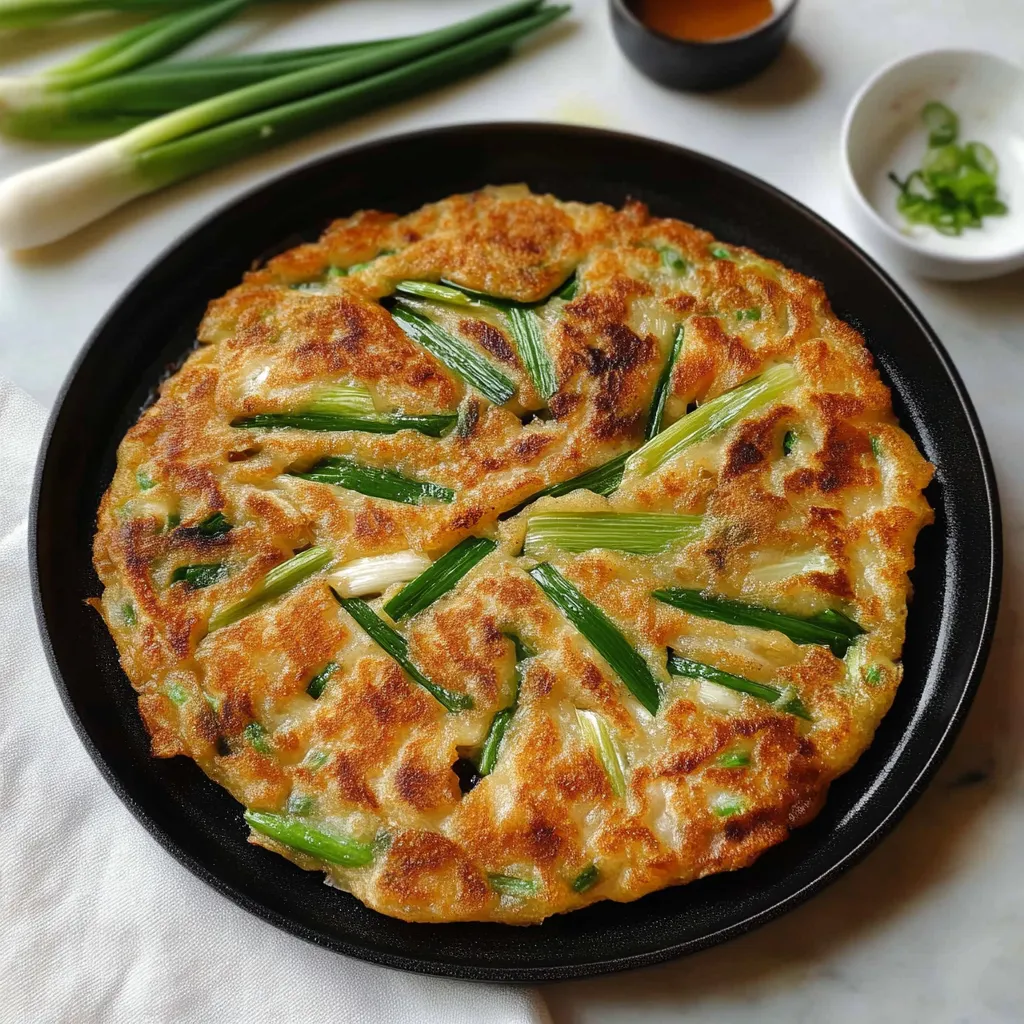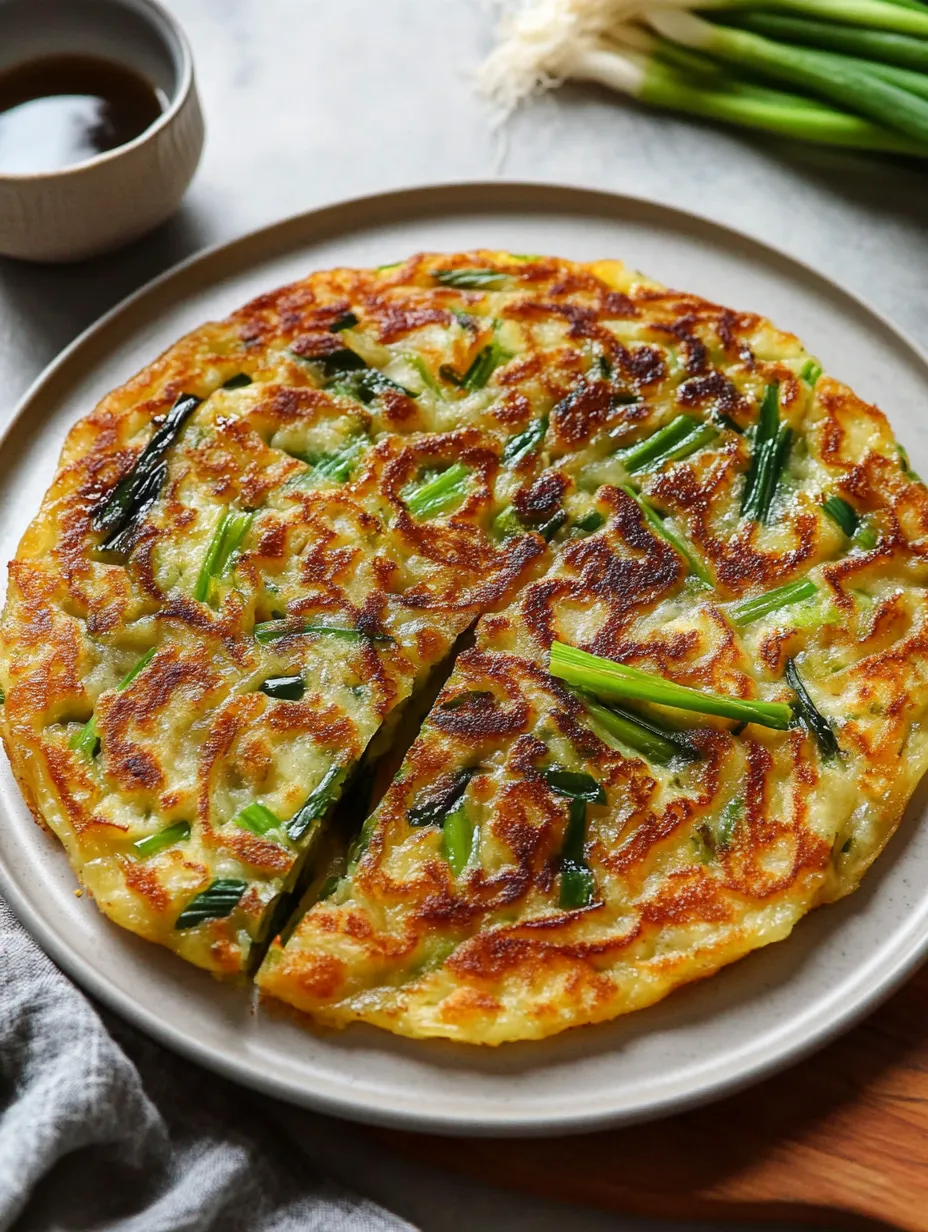 Pin it
Pin it
Pajeon gives you that amazing Korean scallion pancake experience with crunchy edges and chewy centers in every bite. It's loaded with fresh green onions and comes with a zingy soy dipping sauce that turns basic ingredients into something truly special. I stumbled upon pajeon at a tiny Korean spot one rainy day, and it's stuck with me as my favorite comfort food ever since. Works great whether you want a starter or something light to eat.
Just the other day, I made these for some friends who came over, and one who'd spent three years living in Seoul told me they tasted just like the real thing. Want to know my tricks? Don't be stingy with the oil and make sure your water is freezing cold when mixing the batter.
Key Ingredients and Shopping Advice
- Green Onions: Go for bright, crisp ones without any yellow parts for top-notch flavor
- Potato Starch: This gives you that amazing crispy-chewy texture (you can use cornstarch if needed)
- Baking Powder: My hidden trick for extra crispiness that many folks leave out
- Chicken Bouillon Powder: Adds rich flavor without needing tons of extra ingredients
- Freezing Cold Water: Nearly ice-cold water makes steam while cooking, giving you a lighter pancake
- Neutral Oil: Pick something with high smoke point like vegetable or avocado oil
Step-by-Step Cooking Guide
- Get Your Green Onions Ready: Clean them well and dry completely - wetness will make soggy pancakes. Cut thick white parts down the middle and chop into 1.5-inch pieces. This makes eating easier and cooks everything evenly.
- Throw Together Your Batter: Put flour, potato starch, baking powder, salt, bouillon powder, garlic powder, and onion powder in a bowl with green onions. Pour in ice-cold water and stir just until mixed - too much stirring makes tough pancakes.
- Get Your Pan Hot: Use a big non-stick pan over medium-high heat with plenty of oil (about 2.5 tablespoons). The oil should look shimmery but not smoky. Good heating stops sticking and makes crispy edges.
- Start With Green Onions: Toss green onions into the hot oil, spread them out, then pour batter over top. This way you'll see the scallions clearly and get better texture than mixing everything in one go.
- Cover With Batter: Pour the rest of your batter over your arranged onions, filling all the gaps. Give it a gentle swirl to even it out without messing up your onion pattern.
- Watch Your Heat: Turn down to medium and cook until the bottom turns golden with tiny bubbles showing up throughout, about 3 minutes. Right heat makes sure it cooks inside without burning outside.
- Flip It Boldly: Wait till your pancake is set and golden before flipping. Use a big spatula and flip in one smooth move. Add your remaining oil around the edges after flipping.
- Push Down For Crunch: Every so often, push down on the pancake with your spatula so it touches the pan more, which makes it crunchier.
- Cut And Eat Right Away: Move to a cutting board and slice into squares or triangles. Eat while hot for maximum crunch.
- Whip Up Your Dipping Sauce: Mix soy sauce, rice vinegar, sesame oil, and chopped green onions. This tangy-savory combo works perfectly with the pancake.
 Pin it
Pin it
My Korean buddy laughed at my first pajeon attempt and taught me something valuable. "You gotta wait," she told me, "until you see those edges turning golden. If you rush it, you'll end up with broken pancakes."
 Pin it
Pin it
Traditional Serving Ideas
Koreans especially love eating pajeon on rainy days, often with a glass of makgeolli (rice wine). There's something magical about munching on a crispy, savory pancake while sipping fizzy, slightly sweet wine and listening to the rain outside. I've started doing this too, always keeping pancake stuff ready for those stormy nights when you just need something comforting.
Mix It Up With Options
What makes this recipe so great is how easy it is to change up. While the classic version puts green onions front and center, you can toss in whatever you have around. Sometimes I add thin slices of mushrooms or bright bell peppers for extra nutrients and eye appeal. Want something heartier? Throw in some small cooked shrimp or squid pieces to make haemul pajeon (seafood pancake), which turns this simple dish into something more filling.
Food Heritage Connection
When I make pajeon, I feel connected to Korean food traditions that focus on keeping things simple yet balanced. You'll find this humble pancake everywhere in Korea - at family get-togethers, street food carts, and restaurant menus - loved by folks of all kinds. I love how cutting the pancake into pieces for sharing reflects the Korean value of eating together. Every time I whip up this recipe, I'm taking part in a food custom that's brought people together for ages.
 Pin it
Pin it
Wrapping Things Up
These crunchy pancakes have become my trusty solution when I need something quick but impressive. The exciting sizzle as batter hits hot oil, the amazing smell of green onions cooking, and that first perfect bite with tangy sauce create an experience way beyond what you'd expect from such basic ingredients. What makes pajeon special is how it turns simple stuff into something amazing just by using the right technique. It reminds me that good cooking isn't always about fancy ingredients or complicated steps - sometimes the most satisfying foods come from nailing the basics and caring about those small details that really matter.
Final Tips:
- Need gluten-free? Just swap all-purpose flour with rice flour or a gluten-free mix
- Make your dipping sauce first so flavors can mingle while you cook the pancake
- Got leftovers? Reheat them in an air fryer at 350°F for 5 minutes
- Want it to look fancy? Save some green onion tops to sprinkle over just-cooked pancakes
- Make extra batter and freeze portions for quick meals later on
Frequently Asked Questions
- → Why use cold water?
- Cold water makes your pancake turn out crunchier.
- → Can I use different starches?
- Stick with potato or corn starch, others won't work right.
- → Why dry the green onions?
- Damp onions will make your pancake soft instead of crispy.
- → Can I make it ahead?
- It's best eaten right away while it's still crunchy.
- → What pan works best?
- Go for a big non-stick skillet for easy turning and even heat.
